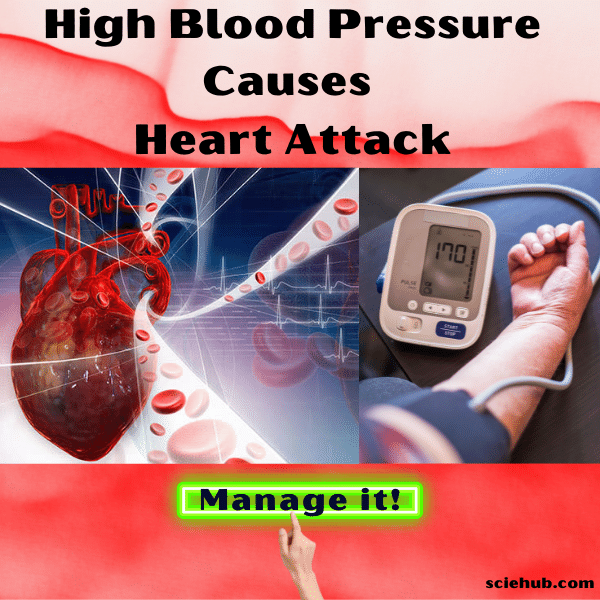What is Blood Pressure?
Blood pressure is the force of the blood that pushes against the walls of arteries. When the heartbeats, it pumps blood into the arteries. When your heart pumps the blood, your BP is highest. This is systolic pressure. When your heart is at rest, your BP lowers between beats. We call this diastolic pressure. For most people, it can fluctuate from day to day and affect a person’s overall risk for heart disease and stroke. Blood pressure readings are usually expressed in millimeters of mercury (mm Hg) or as an ’80/60′ reading. The first number represents systolic BP, and the second represents diastolic BP.
Also read: Lose weight without exercising and dieting
How do you calculate BP?
Doctors use the formula of the systolic pressure (the top number) minus diastolic pressure (the bottom number) to calculate BP.
What does high blood pressure mean?
Blood pressure changes throughout the day according to your activities. This BP is higher than normal. If it measures consistently above normal may result in a high BP diagnosis. It (HBP) is a chronic medical condition in which the blood circulates through the body with too much force. The higher your blood pressure level, the higher risks you have for other health problems. The result? High BP puts strain on the heart, arteries, and kidneys. It will eventually lead to damage that can’t repair.
Also read: Natural teeth whitener
Guidelines to diagnose the blood pressure
Health care professionals may follow different guidelines to diagnose the blood pressure:
- Following the Seventh Report of the Joint National Committee on Prevention, Detection, Evaluation, and Treatment of High Blood Pressure- 2003. According to this guideline, some health care professionals diagnose patients with high BP if the patient’s BP is consistently 140/90 mm Hg or higher
- The American College of Cardiology/ American Heart Association Guideline for the Prevention, Detection, Evaluation, and Management of High Blood Pressure in Adults- 2017. According to this guideline, health care professionals diagnose patients with high BP if the patient’s BP is consistently 130/80 mm Hg or higher
Kinds of High Blood Pressure
There are three main kinds of high blood pressure:
- primary hypertension,
- secondary hypertension, and
- pre-hypertension.
Primary hypertension occurs when an individual has abnormally high BP without any other medical condition as a factor.
Medical conditions such as kidney disease or pregnancy can cause Secondary hypertension.
Pre-hypertension means your BP is higher than normal but not yet considered high enough for a diagnosis of high blood pressure.
In general, anything over 140/90 mm Hg is considered high BP. But what do these numbers mean? The first number refers to the systolic reading, which measures how hard your heart pumps at any given moment; this reading should be under 140 mm Hg. The second number refers to the diastolic reading, which measures the pressure between beats; this reading should be under 90 mm Hg.
Also read: EMF Defense Pendant Necklace
What are the warning signs of high blood pressure?
Usually, high blood pressure doesn’t have any symptoms or signs. As a result, many people do not know they have it. The only way to know if you have high BP is to measure it.
If you suspect that you may have high BP, it’s important to know the warning signs. These include
- Headache
- Dizziness
- Nausea
- Shortness of breath
- Chest pain or discomfort
- Excessive thirst or inability to drink enough fluids
- Difficulty concentrating
- Frequent urination or feeling like you need to urinate urgently and often
- Fatigue
If you feel any of these symptoms, it is essential to contact your doctor right away. High BP could lead to heart attacks, stroke, and other serious health problems if you don’t treat it.
Also read: Constipation
Manage and Prevent High Blood Pressure
You can manage and prevent high blood pressure. Many people can lower their BP by changing their lifestyles, obviously by discussing with your health care professional. Some of those are you can discuss-
- Healthy diet
- Salt limit
- Healthy weight
- Not smoking, having alcohol
- Managing stress
- Physical activity at least 150 minutes each week. 5 days- 30 minutes a day
By taking care of your health, you can help protect yourself against stroke and heart disease.
Conclusion
Please note that these are a few warning signs of high blood pressure, and while they are not the only warning signs, they are the most common.If you experience any of these symptoms, please consult your physician.
Also read: Home remedies
Affiliate Disclosure:
Some of the links contained in this article may result in a small commission if you opt to purchase the product recommended at no additional cost to you. This may help us to maintain this website to provide you more information about the various health topics and remedies and please know we only recommend high quality products.
Disclaimer:
Please understand that any advice or guidelines revealed here are not even remotely a substitute for sound medical advice from a licensed healthcare provider. Make sure to consult with a professional physician before making any purchasing decision if you use medications or have concerns following the details shared above. Individual results may vary. These products are not intended to diagnose, treat, cure or prevent any disease.
